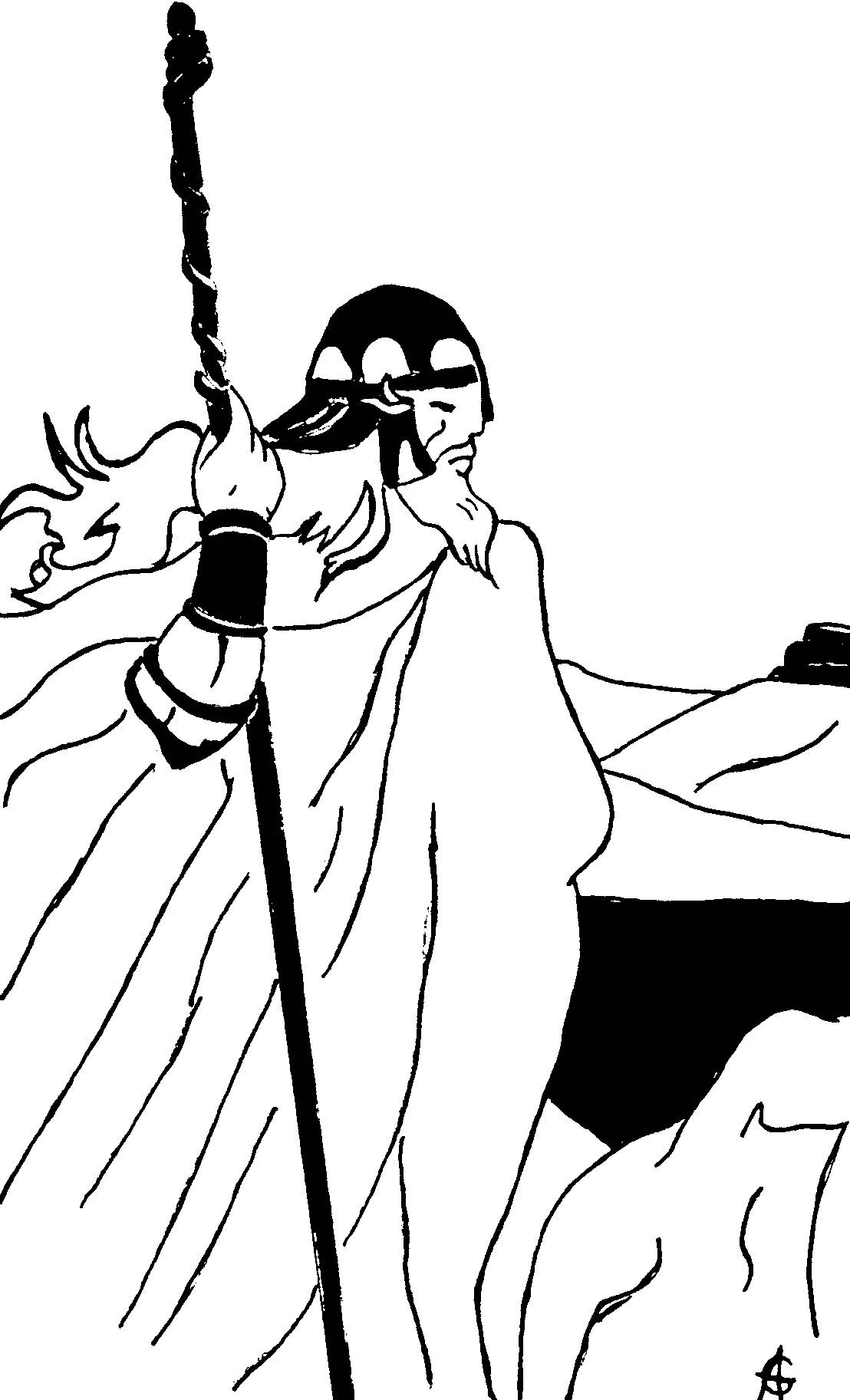Fourth Branch
of
The Mabinogion
Further comments
Although much interpretation of this branch of The Mabinogion appears in the Taxonomy and is concerned with the attributes and hierarchal domains of the Deities, there are a few elements of the story which give us further insight into Keltic society at that epoch.
Here then are a few additional comments upon other areas of text which may shed further light on the Fourth Branch:-
1.
"At
that time Math son of Mathonwy might not live save
while his two feet were in the fold of a maiden's lap...... .
Now the maiden who was with him was Goewin daughter of
Pebin of Dol Bebin in Arfon."
Math's very existence, then, lay in the 'maiden' aspect of the Feminine Principle (as we have said, he was an extension of Don) and Goewin, which means sprightly - denoting youth, was the earthly representative of such a principle on the mundane stratum of myth.
2.
"And
Gilfaethwy son of Don set his heart on the maiden (i.e.
Goewin) and loved her so ......... ."
This demonstrates a slow turning from a tradition in which the woman chooses her man in a matriarchal society - the ultimate breach coming soon in the tale. As the maiden represents Don, the lusting of Gilfaethwy after a symbolic mother may point to a taboo on incest.
3.
"And
the maidens were roughly forced out and she (Goewin)
was lain with against her will."
Here power is finally usurped from the Feminine Principle - a revolt against the ancient Matriarchal Harmonies, heralding an epoch in which patriarchy was to emerge as the norm.
4.
a)
the transmogrification of Gwydion and Gilfaethwy into
animals for three years.
b) Math's command that they bring forth young between
them.
c) Math's final retort: "And a great shame have you had, that
each of you has had young by the other."
a. is
a fitting retribution for their bestial act of rape, while -
b. enables
them to experience sexual violation each at the hand
of the other, and -
c. together
with b. above demonstrates the ultimate disgrace
among men and, therefore, a taboo in Keltic culture - the act
of homosexual copulation.
5.
Arianrhod
enters the tale and is pregnant to Gwydion. She is
the Earth Goddess who avers she is yet a maiden.
Maidenhood or virginity in Keltic culture simply meant being a woman who was not pair-bonded. (I do not use the word 'married' as I doubt there was such a formal concept.) This is similar to the Roman description of a woman being a virgo (i.e. unmarried) or a virgo intacta (unmarried and untouched by a man.) Nevertheless a woman could be a maiden (unattached) yet choose to lie with man and become a mother.
6.
"'Well',
said she (Arianrhod), 'I will swear on him a destiny,
that he shall not get a name till he get it from me.'"
The custom is revealed that it is the mother who names her child - logical in a matriarchal society where the identity of the father may be unknown. The child always took its identity from the mother's bloodline. (Note that the Sons and Daughters, the Deities of The Warband, were called the offspring of Don, not Beli.) vide "Cyflwyniad Y Mabanod."
7.
"'Well', said she (Arianrhod), 'I will swear on this boy a
destiny that he shall never bear arms till I myself equip him
therewith.'"
This the Keltic custom of the mother arming her son on his reaching mature years. This is still done in a rite of passage, "Urddo Marchawc" - a coming of age ceremony. Following a blessing with the sword, the mother says "Gwisc ymdan y gwryanc hwnn" which is the Middle Welsh for "Put armour on this youth." She then proceeds to arm her son accordingly saying "Y'th law di nu y rodaf i" - the Middle Welsh for "Into thy hands I now give it" after each weapon.
8. The conjuring of a wife for Lleu from flowers.
Here woman is formed for the use of man which demonstrates that patriarchy is established.
9. Blodeuwedd's treachery.
There are some mitigating factors in her treachery and betrayal of Lleu:-
a. She
was not allowed to grow according to her own true and
indeed composite nature, being 'uprooted' from her real state.
b. She
was moulded by the dictates of man to be what, by
nature, she was not.
c. She
was transformed, therefore, against her true will and thus
became not only untrue to Lleu but to herself.
The Moral: this inset demonstrates the ills that can ensue when patriarchy holds sway.
]

Math overlooking Kaer Dathyl
More relating to the Mabinogi of Math can be seen in the Major and Minor festivals which are seasonal psycho-dramas.